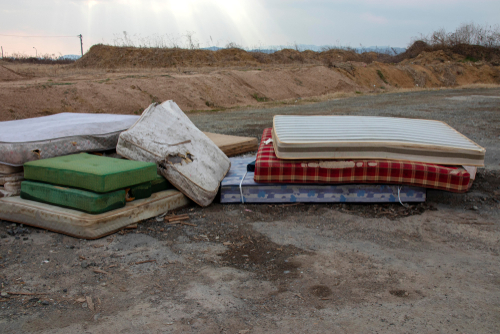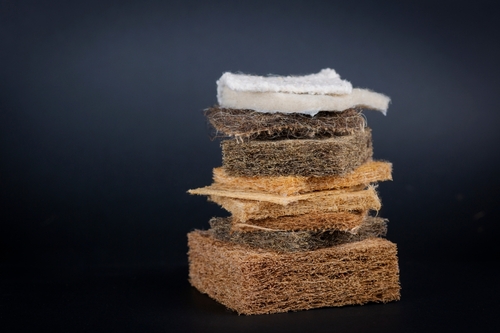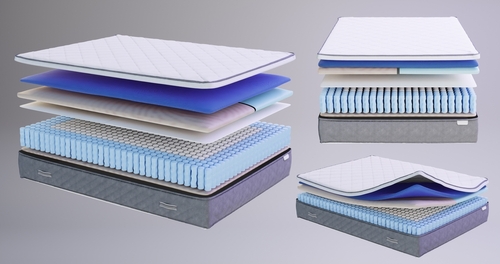May 20, 2024 - Benjamin Ehinger
How to Cut Up a Mattress: A Step-by-Step Guide
CALL NOW 844-762-8449
When the time comes to dispose of an old mattress, you might consider cutting it up, either to make it easier to transport or to repurpose the materials. Understanding how to properly disassemble a mattress is both practical and cost-effective. It involves a clear understanding of its construction and using the right tools to dismantle the fabric, foam, and springs or other structural components.
Before you begin, ensure you have the proper safety gear and are aware of the best techniques to cut and separate the materials without injuring yourself or damaging your surroundings. With the right approach and tools, you can repurpose usable materials, reduce waste, and safely dispose of the rest.
 When cutting up a mattress, safety first should be your priority. The process involves sharp tools and potentially hazardous materials, making it imperative to take proper precautions.
When cutting up a mattress, safety first should be your priority. The process involves sharp tools and potentially hazardous materials, making it imperative to take proper precautions.
 When it’s time to say goodbye to your old mattress, you have options that are both environmentally friendly and creative. Proper disposal ensures you’re not harming the environment, while repurposing can give new life to the mattress components.
When it’s time to say goodbye to your old mattress, you have options that are both environmentally friendly and creative. Proper disposal ensures you’re not harming the environment, while repurposing can give new life to the mattress components.
Key Takeaways
- Proper preparation and understanding of mattress construction are crucial for safe disassembly.
- Utilize appropriate cutting tools to efficiently break down the mattress components.
- Implement careful disposal or repurposing strategies for mattress materials to minimize waste.
Understanding Mattress Composition
Before you consider cutting up a mattress, it’s essential to understand its composition. This knowledge will guide you in disassembling the mattress safely and efficiently.Identifying Different Mattress Types
Mattresses come in various forms, each with distinctive layers and materials. Innerspring mattresses are constructed with a coil support system and often have a fiberfill or foam outer layer. Memory foam mattresses, on the other hand, consist of dense, supportive foam that contours to your body. Latex mattresses are similar to memory foam but are made from natural or synthetic rubber, offering a bouncier feel. Finally, hybrid mattresses combine coils with foam or latex layers, providing a mix of support and comfort.Components of a Memory Foam Mattress
A memory foam mattress typically features several layers:- Top comfort layer: This usually involves a gel memory foam, which offers pressure relief and can help regulate temperature.
- Transition layer: Often made of a softer polyfoam, this layer serves as a buffer between the comfort layer and the denser base foam.
- Support core: Comprised of high-density polyfoam, providing the mattress with shape and support.
- Fire barrier: Many memory foam mattresses include a fiberglass fire barrier beneath the outer cover, which is crucial for safety but can be challenging to handle due to its irritant nature.
Preparatory Steps
Before you undertake the task of cutting up a mattress, ensure that you’re not voiding any warranties or violating local disposal regulations. You will need precise tools for measuring and marking, to ensure your cuts are accurate and effective.Assessing the Warranty and Disposal Regulations
Check the mattress label or contact the manufacturer to confirm whether your mattress is still under warranty. Cutting a mattress may void warranties, including a lifetime warranty or a 101-night sleep trial. It’s also crucial to understand your municipality’s rules on mattress disposal or recycling. There may be specific guidelines or services for free shipping and returns of larger items like mattresses.Gathering Your Tools
You will need a few essential tools for this task. Assemble a sharp utility knife, metal snips (if cutting springs), protective gloves, and goggles for safety. A measuring tape and a marker are necessary for accurate measurements, and a straight edge will guide your cuts.Measuring and Marking Your Cutting Lines
Use your measuring tape to determine the exact dimensions you want to cut. Measure twice to ensure accuracy. Once you’ve determined the size, use a marker to draw the cutting lines on the mattress. A straight edge or a ruler can help keep these lines clean and even for a smoother cutting process.Safety Measures
 When cutting up a mattress, safety first should be your priority. The process involves sharp tools and potentially hazardous materials, making it imperative to take proper precautions.
When cutting up a mattress, safety first should be your priority. The process involves sharp tools and potentially hazardous materials, making it imperative to take proper precautions.
Using Protective Gear
- Gloves: Always wear heavy-duty gloves to protect your hands from sharp wires and tools.
- Eye Protection: Safety goggles are essential to shield your eyes from dust, debris, and flying particles.
Understanding the Risks
- Sharp Tools: Be aware that using a utility knife or scissors can lead to cuts or punctures if mishandled. Ensure that the tools are directed away from your body during use.
- Materials: Some mattresses contain fiberglass or chemical flame retardants. If you cut into these, you could be exposed to irritants. It’s crucial to work in a well-ventilated area and consider wearing a mask to avoid inhaling harmful particles.
Cutting Techniques
When cutting up a mattress, whether it’s memory foam or a standard one, it’s essential to use the right tools and techniques. Using improper tools can damage the material and make the task more difficult.How to Cut a Memory Foam Mattress
To cut a memory foam mattress, you’ll need a sharp knife, such as a serrated knife, electric carving knife, or heavy-duty scissors. The precision of your cut and the ease of the job greatly depend on the sharpness of your tool.- Measure and mark the area you plan to cut to ensure accuracy.
- Place the memory foam flat on a work surface.
- Use an electric carving knife for a smoother cut, running the knife along the marked line.
- If using a serrated knife, gently saw back and forth for precision. Avoid compressing the foam unnecessarily.
Cutting a Standard Mattress
Standard mattresses have different layers, including upholstery layers and springs, which require different tools:- Box Cutter/Utility Knife: Ideal to start an incision into the fabric and foam layers.
- Wire Cutters/Heavy-Duty Scissors: Necessary if you need to cut through springs or coils.
- Remove the mattress cover and any foam layers using a utility knife, making shallow and controlled cuts to avoid damage.
- Locate and expose the springs. Use wire cutters to snip through them efficiently.
- When cutting through fabric or foam, always work with a sharp knife and slice in a controlled manner.
Post-Cutting Steps
After you’ve successfully cut your mattress, it’s time to address the aftermath and finalize your work. This includes disposing of the debris properly and ensuring the remaining mattress portions are cleanly edged and safe to handle.Cleaning Up the Mess
Materials Needed:- Gloves
- Garbage bags
- Seam ripper
- Vacuum cleaner (optional)
- Debris Collection: Don your gloves, and collect all the mattress fillings, scraps of fabric, and any loose threads. Place them directly into garbage bags.
- Surface Sweep: If you’ve cut foam or batting, those tiny pieces cling due to static. Using a seam ripper, carefully pick them off your cutting surface or vacuum if necessary.
Finalizing the Edges
Tools Required:- Sharp scissors or a utility knife
- Ruler
- Smooth Edges: With sharp scissors or a utility knife, trim any irregularities along the cut edges of your mattress.
- Straight Edge Assistance: Align a ruler along the edge to guide your cutting tool and ensure a straight finish. This not only looks better but also eliminates potential hazards from jagged material.
Mattress Disposal and Repurposing
 When it’s time to say goodbye to your old mattress, you have options that are both environmentally friendly and creative. Proper disposal ensures you’re not harming the environment, while repurposing can give new life to the mattress components.
When it’s time to say goodbye to your old mattress, you have options that are both environmentally friendly and creative. Proper disposal ensures you’re not harming the environment, while repurposing can give new life to the mattress components.
Disposing of a Mattress Properly
Before disposing of your mattress, consider if it is in a condition to donate. If not, check with your local waste management facility for mattress disposal guidelines, as some areas offer recycling programs. You can usually find this information using a store locator for disposal services. If recycling isn’t an option, breaking down the mattress yourself becomes necessary. Start by removing the mattress cover and separating recyclable materials like metal springs and foam.- Check Local Regulations: Each area has specific rules regarding mattress disposal — ensure you comply.
- Recycle if Possible: Use a store locator to find mattress recycling facilities.
- DIY Disassembly: Carefully dismantle your mattress and sort the materials for easier recycling.
DIY Projects Utilizing Mattress Materials
Transforming your worn-out mattress into something new can be a rewarding project. You can create a custom mattress cover from the existing fabric for various uses around the home.- Garden Solutions: Springs and wooden frames can be used to structure raised garden beds.
- Home Decor: Foam padding is perfect for making window seat cushions or playroom poufs.
Addressing Common Cutting Challenges
In this section, you’ll find insights on how to effectively cut through two types of challenges: mattress toppers and serrated edge mattresses. Tackling these problems requires a methodical approach and the right tools.Dealing with Mattress Toppers
If you’re working with a memory foam mattress topper, it’s important to use a sharp cutting tool, as memory foam can be quite dense. A serrated bread knife can be more effective than a regular blade, allowing you to saw through the material with precision. Start by making a small incision and proceed with long, sawing motions, applying even pressure to ensure a clean cut.Handling Mattresses with Serrated Edges
Mattresses with serrated edges pose a different challenge. To cut through these, avoid using plain utility knives, which can become stuck or cause uneven tears. Instead, opt for heavy-duty scissors or an electric carving knife. These tools allow for a smoother motion and are specifically designed to deal with jagged materials, helping you navigate the peaks and valleys of serrated edges without snagging.Final Considerations
Before reaping the benefits of a newly customized mattress, consider these essential aspects to ensure maximum comfort and functionality.Maintaining Your Custom Mattress
Once you’ve cut your mattress, maintaining its structure and comfort is vital. Seam edges where the cut has been made using a sewing kit to prevent fraying and possible deterioration. It’s crucial to encase the custom size mattress in a protective cover to safeguard against spills and debris, which can degrade the foam and other materials.Bedding and Accessory Adjustments
After resizing your mattress, bedding must be tailored to match. This includes sheets, mattress protectors, and comforters, which may need to be custom fitted or altered. Research on puffy mattress reviews suggests that the right bedding not only complements the feel but also enhances the overall sleep experience. Consider the thickness and elasticity of the material—this adaptation ensures your altered mattress is just as cozy as a conventional one.Frequently Asked Questions
Disassembling and disposing of a mattress requires the right technique and tools. This section will provide you with the necessary steps and precautions to tackle the task confidently and safely.What tools are needed to dismantle a foam mattress?
To dismantle a foam mattress, you need a pair of durable gloves, a utility knife or strong scissors, and protective eyewear. Start by removing the cover, then proceed to cut the foam into smaller sections for easier disposal.Is it necessary to remove the springs before disposing of a mattress?
It’s not strictly necessary to remove the springs, but doing so can make the mattress more compact and easier to dispose of. Utilize metal snips or bolt cutters if you decide to remove the springs.What is the most cost-effective method for mattress disposal?
The most cost-effective method is often to cut up the mattress for curbside disposal, provided your local waste management accepts it. Alternatively, seek out free mattress recycling programs in your area, which can handle the disposal process for you.How should one safely proceed when cutting up a spring mattress?
When cutting up a spring mattress, wear protective gloves and eyewear to prevent injury. Start by removing the fabric cover and then cut the foam layer, taking care to cut around springs to avoid damaging your tools.What options are available for free mattress recycling or disposal?
Many localities offer free mattress recycling or bulk waste disposal days, and some charities may accept mattresses if they are in good condition. Checking with your local waste management department can reveal options for eco-friendly disposal.Are there any risks involved in disassembling a mattress by yourself?
Yes, there are risks such as exposure to dust and allergens, sharp metal components, and potentially difficult-to-handle materials like fiberglass. Wear appropriate safety gear and proceed with caution to minimize these risks.RECENT BLOGS
Our Reviews
Glenda Lanier Prowell
1721758635
I have ordered an 11 yard dumpster to be delivered to my house.Lonier was extremely helpful and answered all my questions. The rate was very reasonable.
Cedric Smikle
1721660395
Amber was extremely professional and courteous. She answered all of my questions and even some that I didn’t know I needed to ask.
Cait Kaider
1721243051
I highly recommend Waste Removal USA for their responsiveness and how the staff work hard to provide exceptional customer service. They have done well by us and our clients. Thank you!
Easom Family
1721223306
Louiner Pierre-Louis Is awesome! Did a great job. Will definitely be using this same company for all my dumpster needs because of his awesome customer service! Thank you!!!
tabitha Vazquez
1720539988
Wonderful and fast customer service!
LATEST BLOGS






